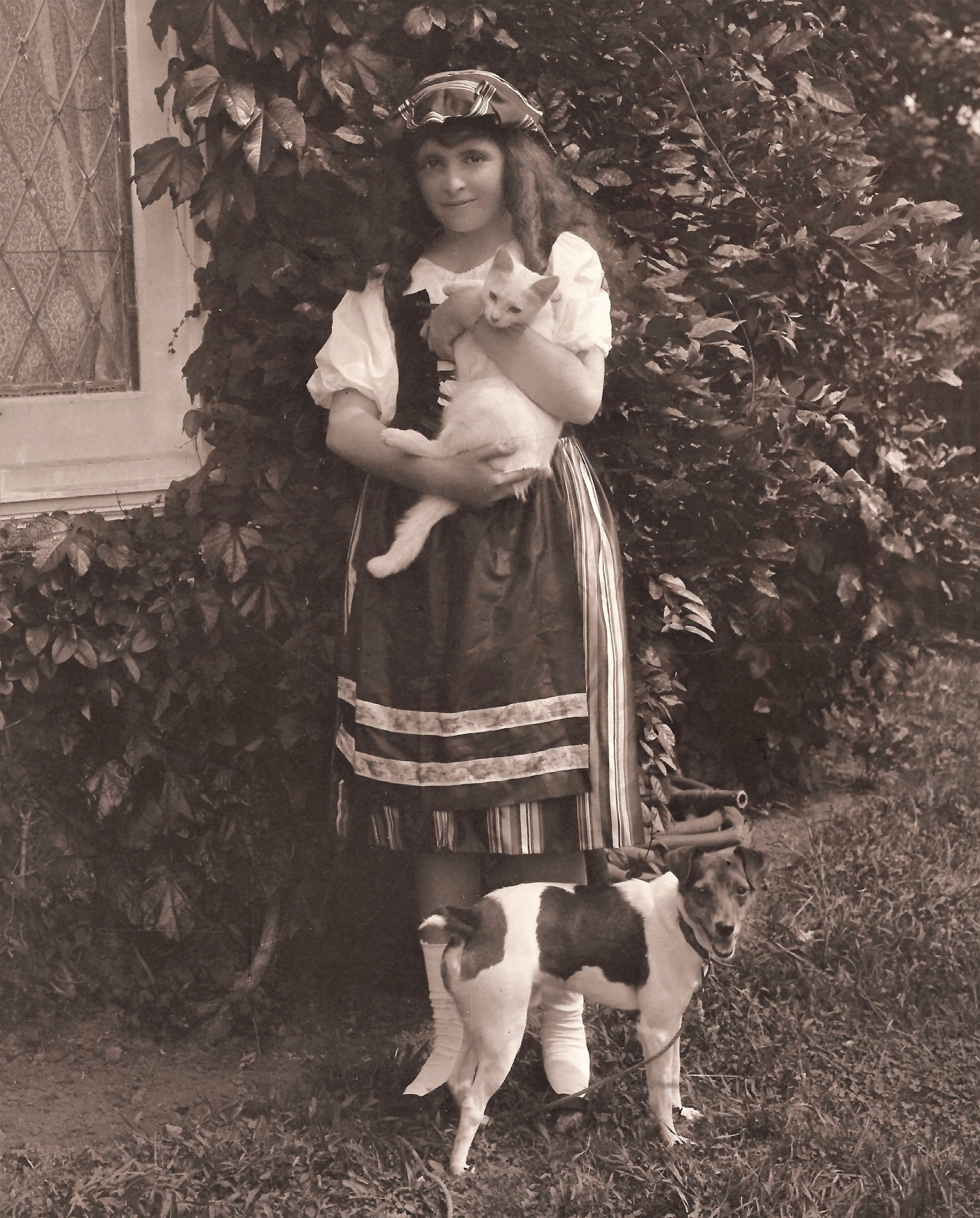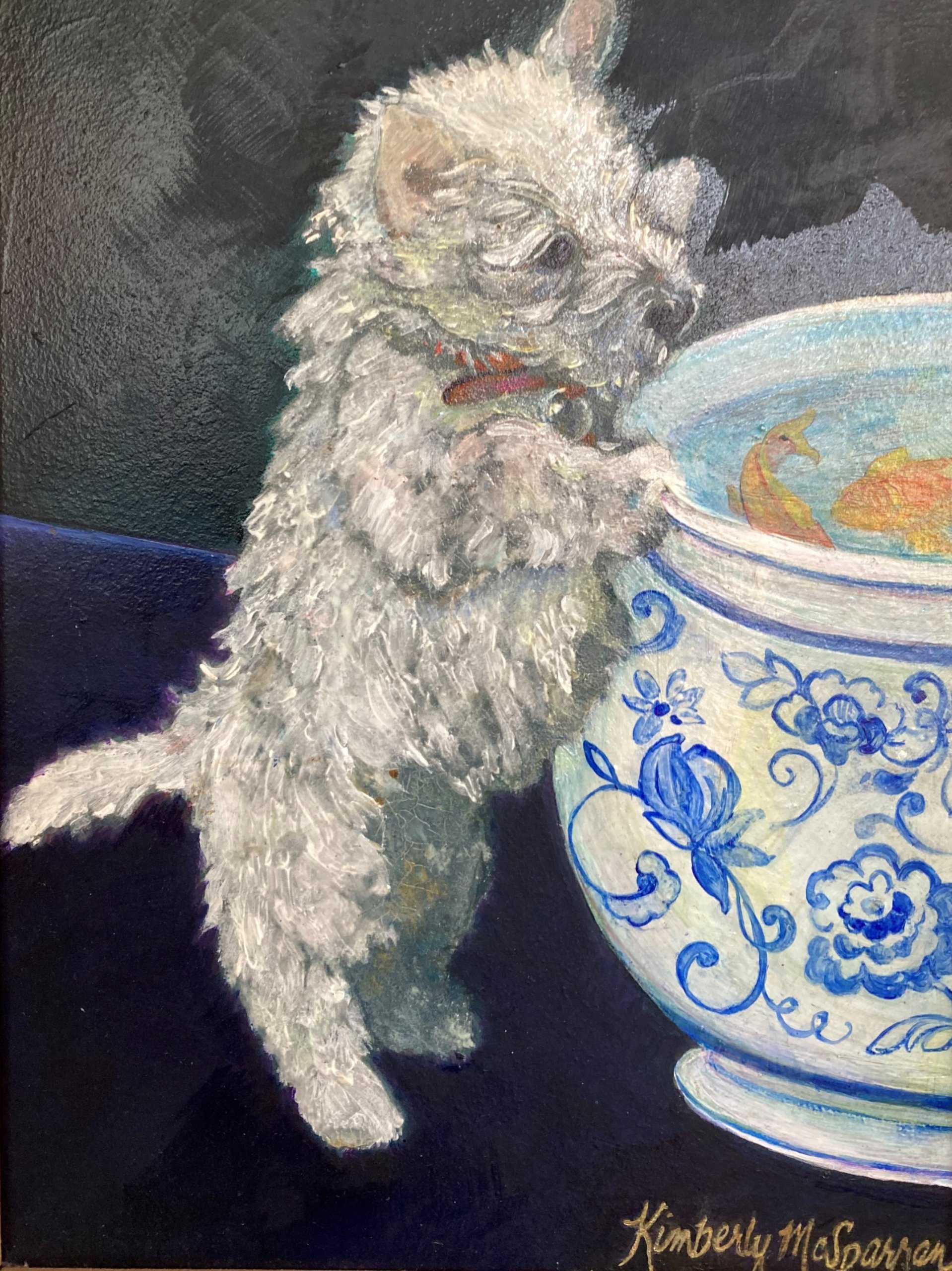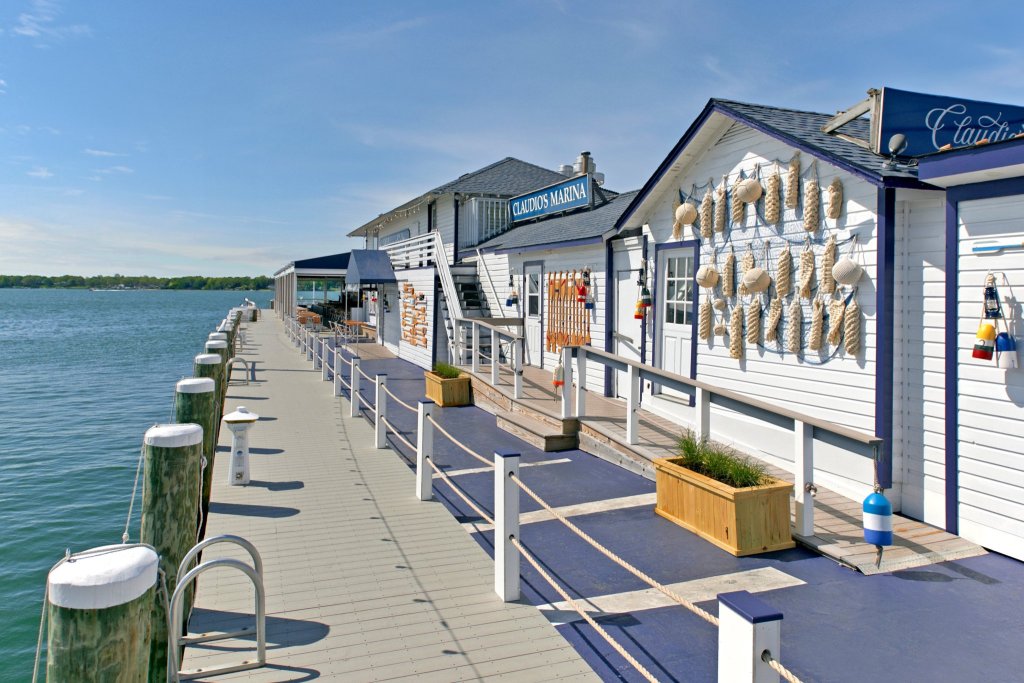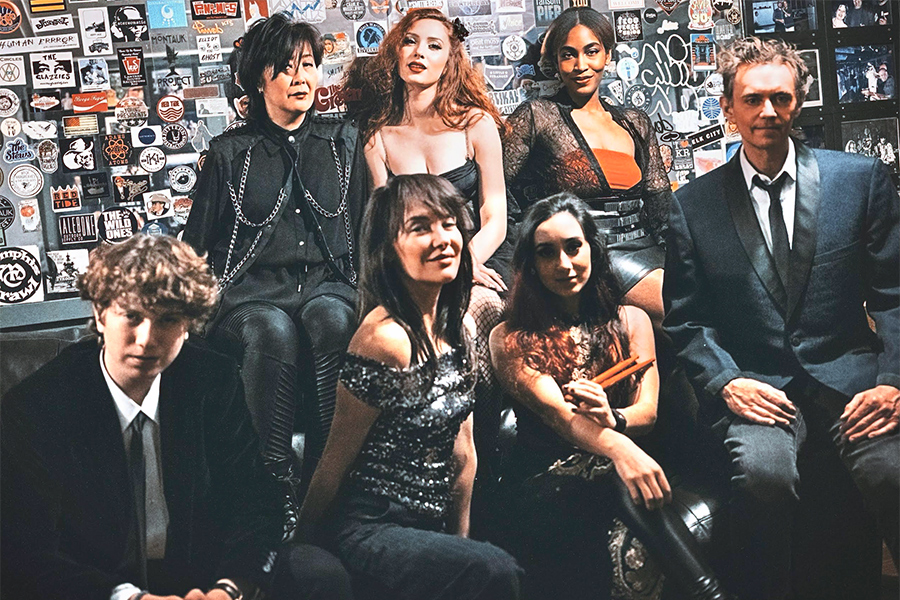Southampton History Museum Explores Pets in New Exhibition
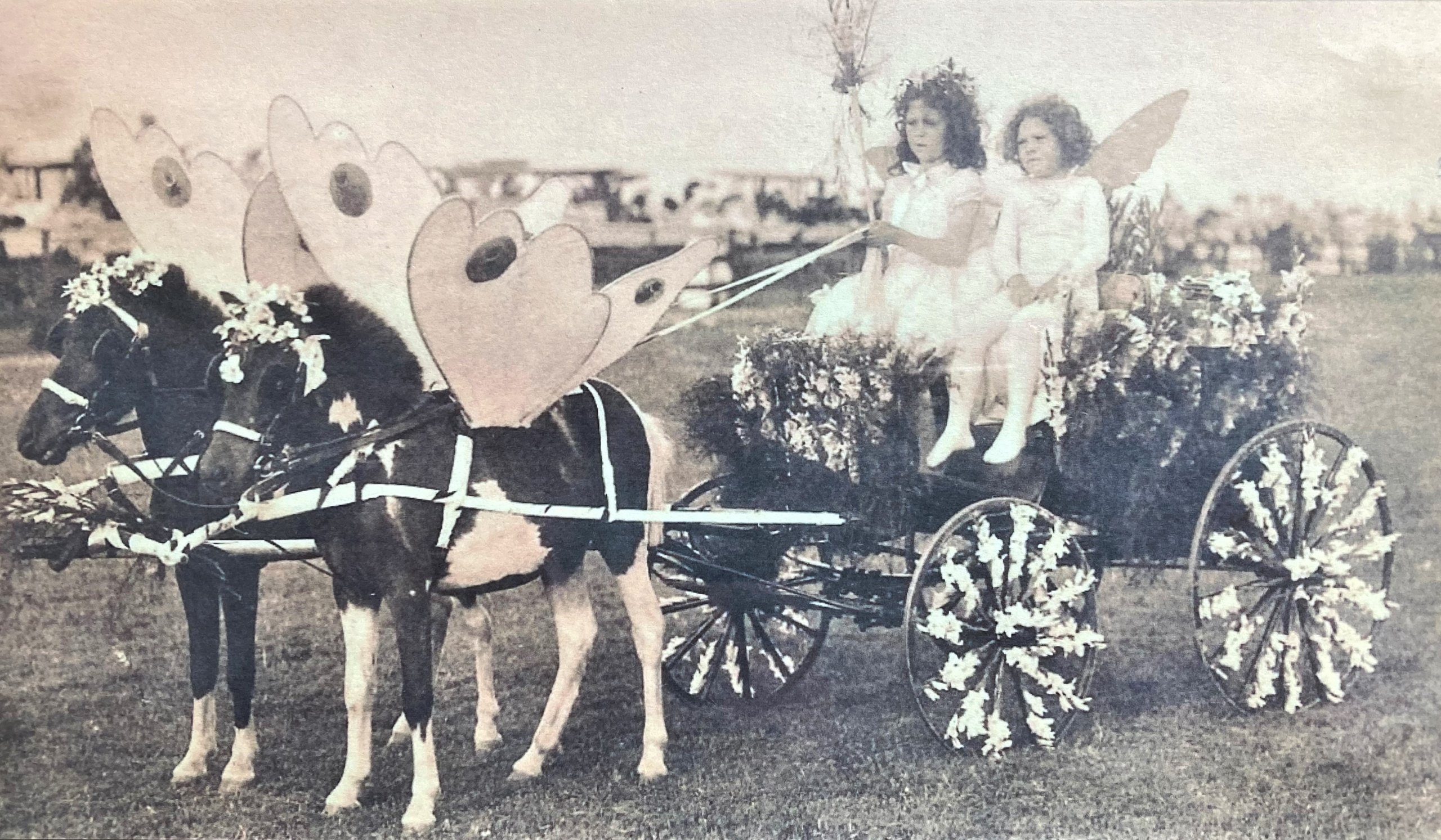
Southampton History Museum is kicking off the 2022 season with a new exhibition all about pets. Open May 4 to December 31, Puppies, Ponies & Pussycats: Tails of Southampton looks at the relationship between humans and our animals, how that relationship has changed, and what hasn’t changed, over the past 150 years.
The show presents a series of historic and modern photographs of people and their pets, a selection of vintage pet-related objects and artwork by three local contemporary artists focused on domestic animals, including Southampton residents Kimberly McSparran, Rachelle Oatman and Dinah Maxwell Smith.
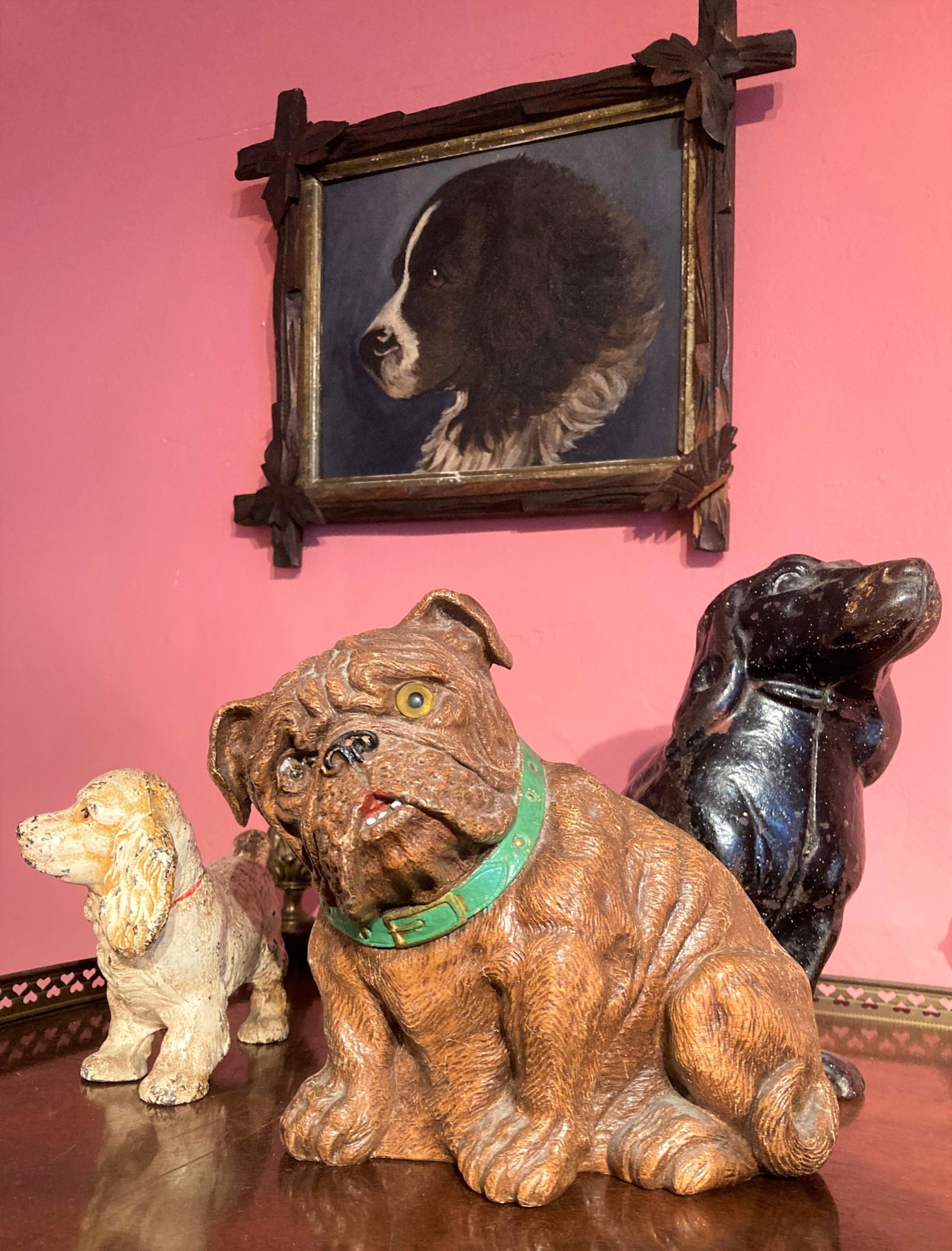
“My intent was to show how our deep love of animals has changed little over the past 150 years,” explains Southampton History Museum Executive Director Tom Edmonds, who curated the show with help from his staff. “The exhibit brings together our shared romance with those amazing beings that are in our care,” he adds, noting that this show was 16 years in the making. “I thought, if people have been living with domesticated animals for 30,000 years, why not celebrate that relationship? Love for our animals may be even stronger today than in the past.”
In a narrative about Puppies, Ponies & Pussycats: Tails of Southampton, museum archivist Mary Cummings describes the evolving human-animal bond, pointing out that, many years ago, pets were integral to a family for what they could provide, and it had nothing to do with love or companionship. “It was once a more practical matter: In exchange for food and shelter, animals hauled, herded, gave up their milk and sometimes their lives to be cooked and consumed at the dinner table,” she writes, while also acknowledging that farmers did grow fond of their animals, but they certainly weren’t bringing pets into their beds, pushing them around in baby strollers or dressing them in sweaters, booties and raincoats.
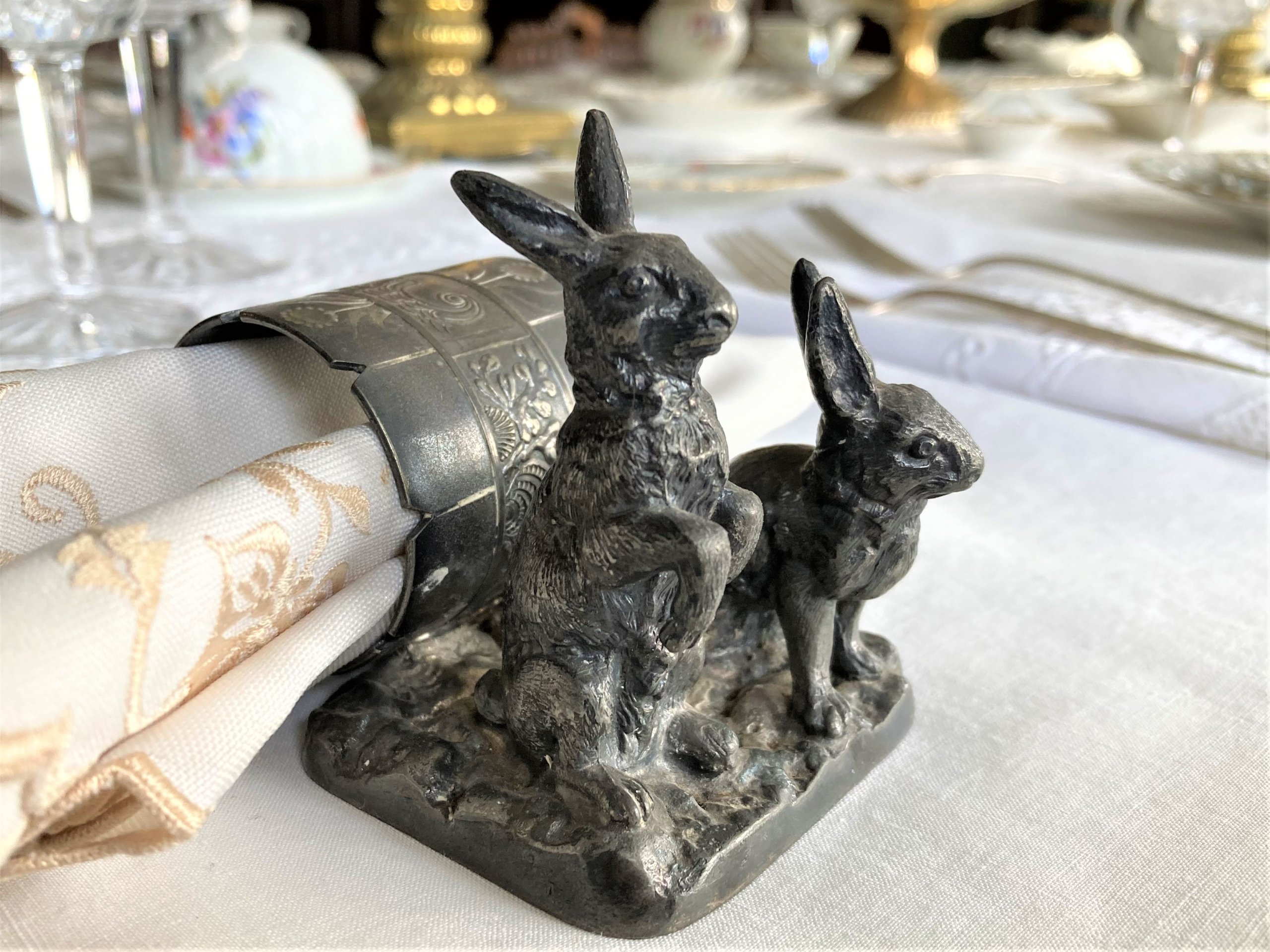
“The human-animal bond has tightened and the list of species, adored and sometimes obsessed over as pets, has expanded,” Cummings continues, noting that, of course, dogs and cats remain the top two most popular pets. “Rabbits are an unexpected third,” she explains, detailing how the perception of rabbits changed from food to pet in 1900 when “a craze for raising Belgian hares altered attitudes toward butchering bunnies and people lost their taste for rabbit stew.” Then, in 1904, “Beatrix Potter’s Benjamin Bunny clinched the upgrade.”
Among the objects to be displayed at the museum, a circa 1900 rabbit napkin ring demonstrates how the Belgian hare fad brought the animal to the dinner table in an entirely different way.
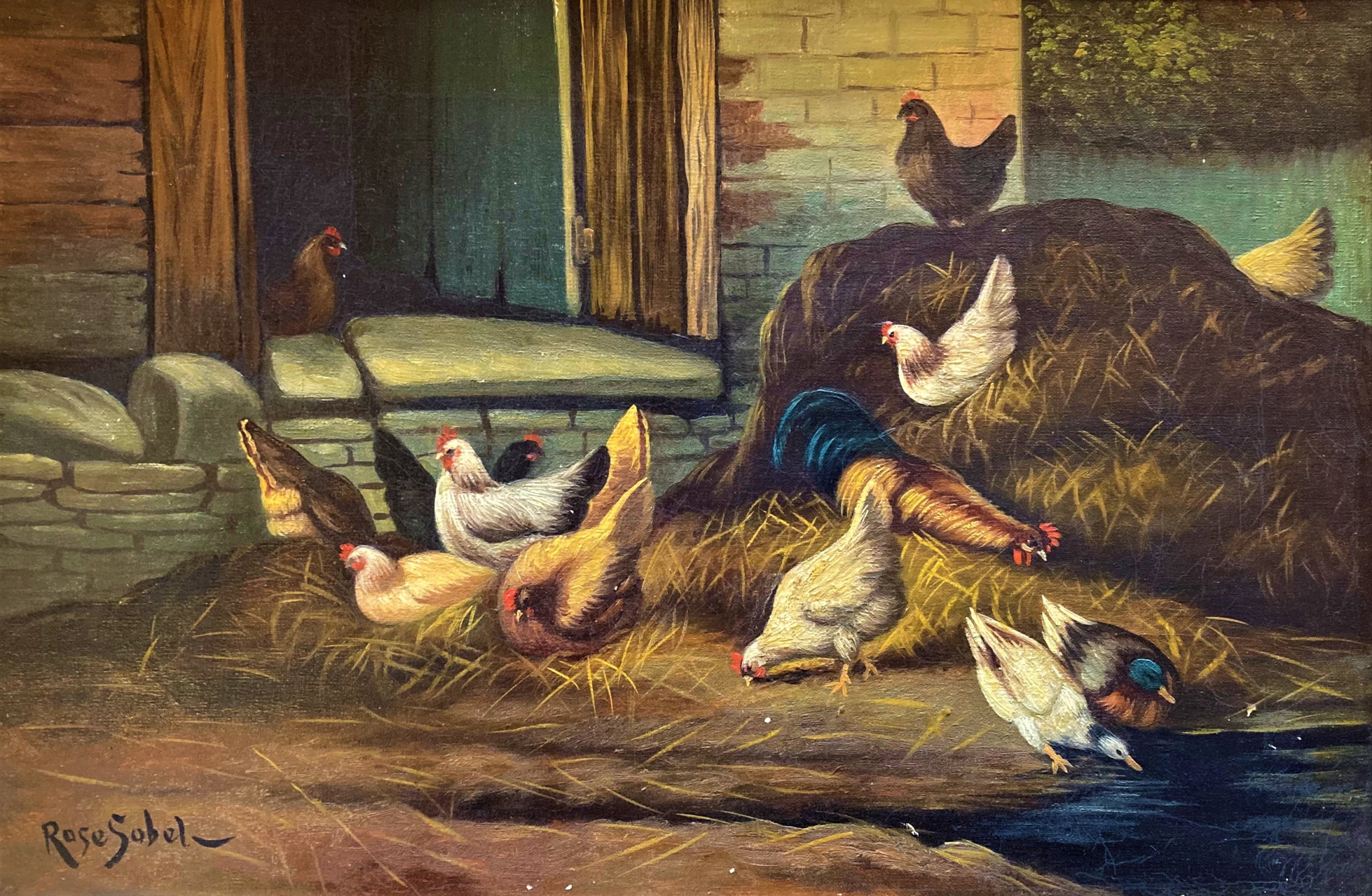
Cummings also describes a “chicken mania” in the mid 19th century that elevated chickens’ status when many in the country were awestruck by Chinese ornamental chickens called Cochin. Tails of Southampton features paintings honoring the beloved birds, including “Barnyard Chickens” from 1920, and a beautiful 2022 chicken portrait, “Bruce in Utah,” by Dinah Maxwell Smith.
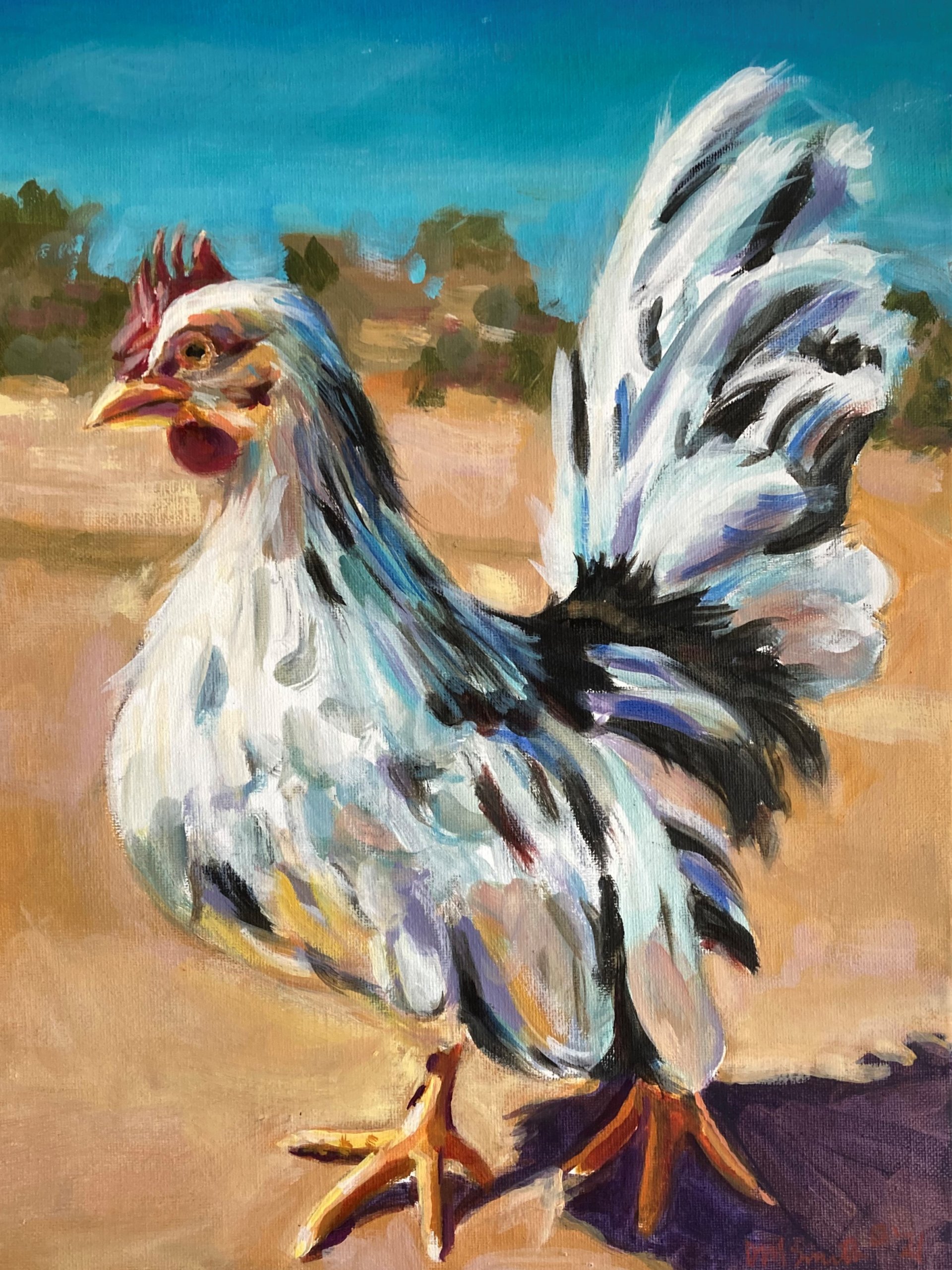
Meanwhile, a pair of dog paintings, pulled from a number of works in the show, juxtapose two eras, with Emile Bujon’s 1831 portrait of two Basset Hounds, “Blanchette and Romano,” and Rachelle Oatman’s 2022 piece, “The K-Nine Committee,” anthropomorphizing a trio of socialite guests at a Southampton Hospital fundraiser, each painted with a different dog head. A selection of dog-shaped doorstops — part of an array of pet-themed toys, dishes, banks, pillows and other objects on view from the museum collection — further demonstrates the totemic ubiquity of man’s best friend.
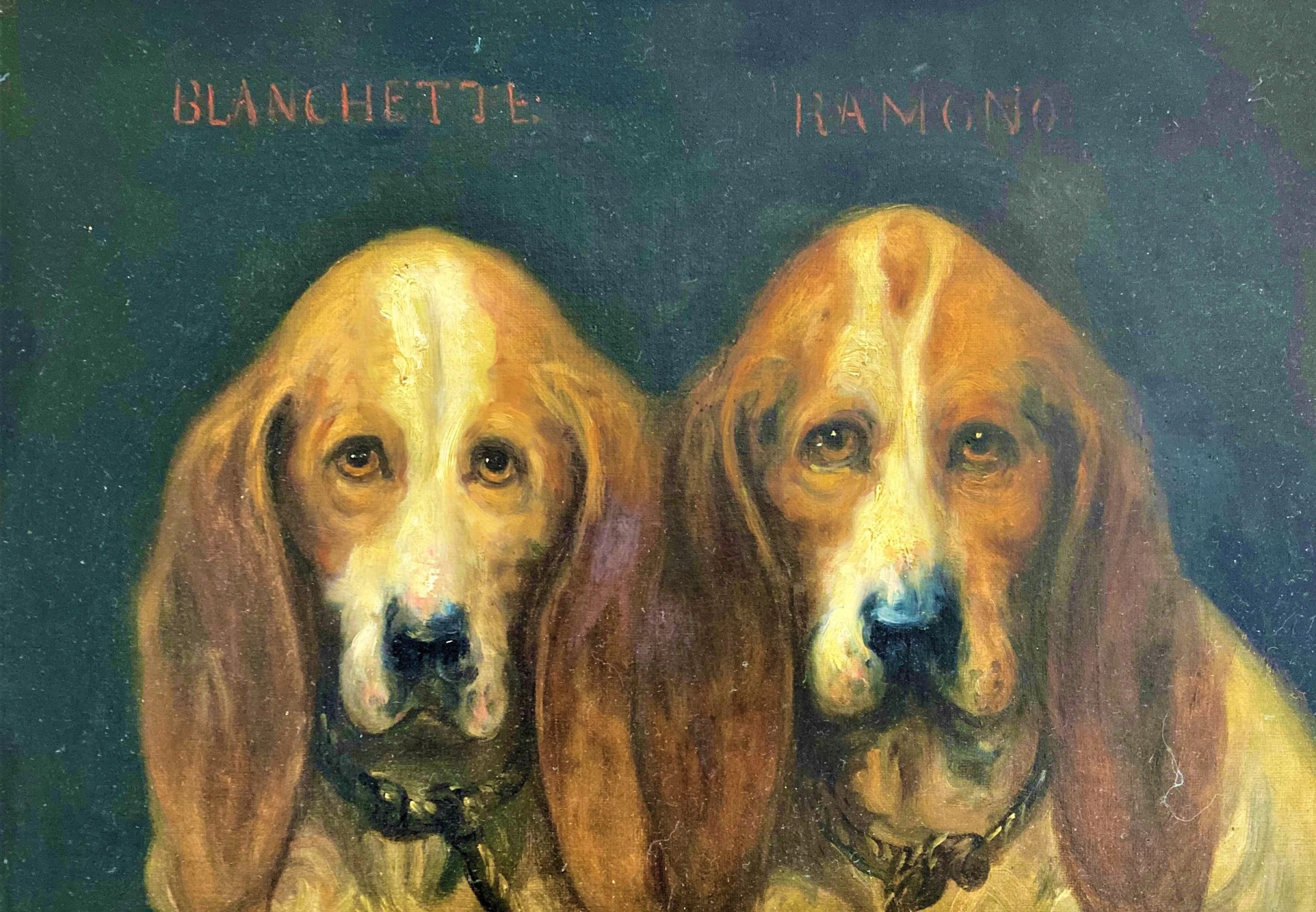
Southampton residents began photographing their pets in the 1870s and continue the practice today, though celluloid film and cyanotype prints are now replaced with digital drives and Instagram stories. But, as the museum proves, people dressed their animals for pictures going back more than a century. For example, a 1910 photo depicts two ponies bedecked in butterfly wings and flowers pulling an equally frilly carriage with two little girls in fairy costumes (see top of page).
Edmonds arranged the historic images and objects on dusty rose-colored walls in a traditional, 19th century style, while contemporary displays are mounted on modern white walls in the center. “It looks like a UFO landed in the middle of a Victorian era parlor,” he says.
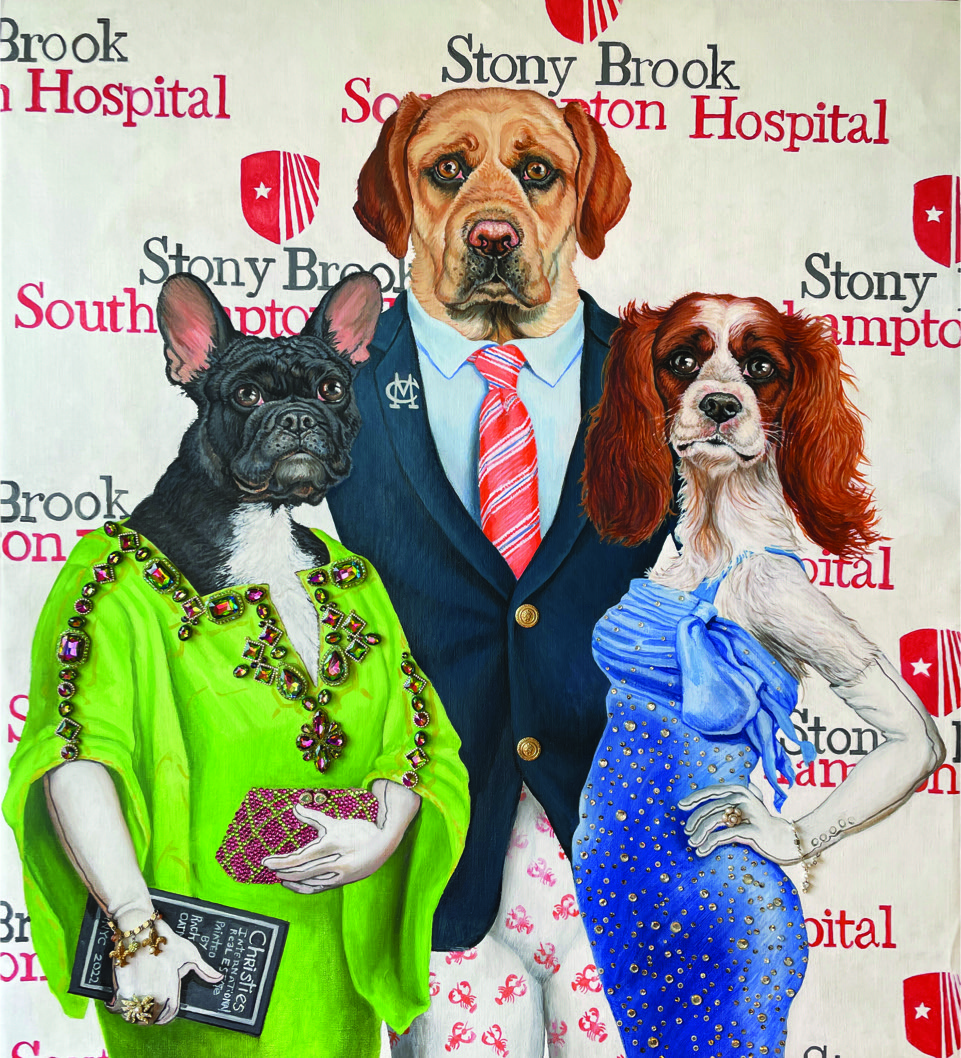
Visitors to Puppies, Ponies & Pussycats: Tails of Southampton will enjoy all sorts of animal-themed artwork and furnishings, either hand-made or manufactured, from the past 150 years. Some objects in the exhibition have been donated and are now part of Southampton History Museum’s collection, while others are on loan from local residents — a fact that confirms the community’s love of animals not only endures as a strong tradition, it will continue to grow over generations.
For more information and hours, visit southamptonhistory.org.
